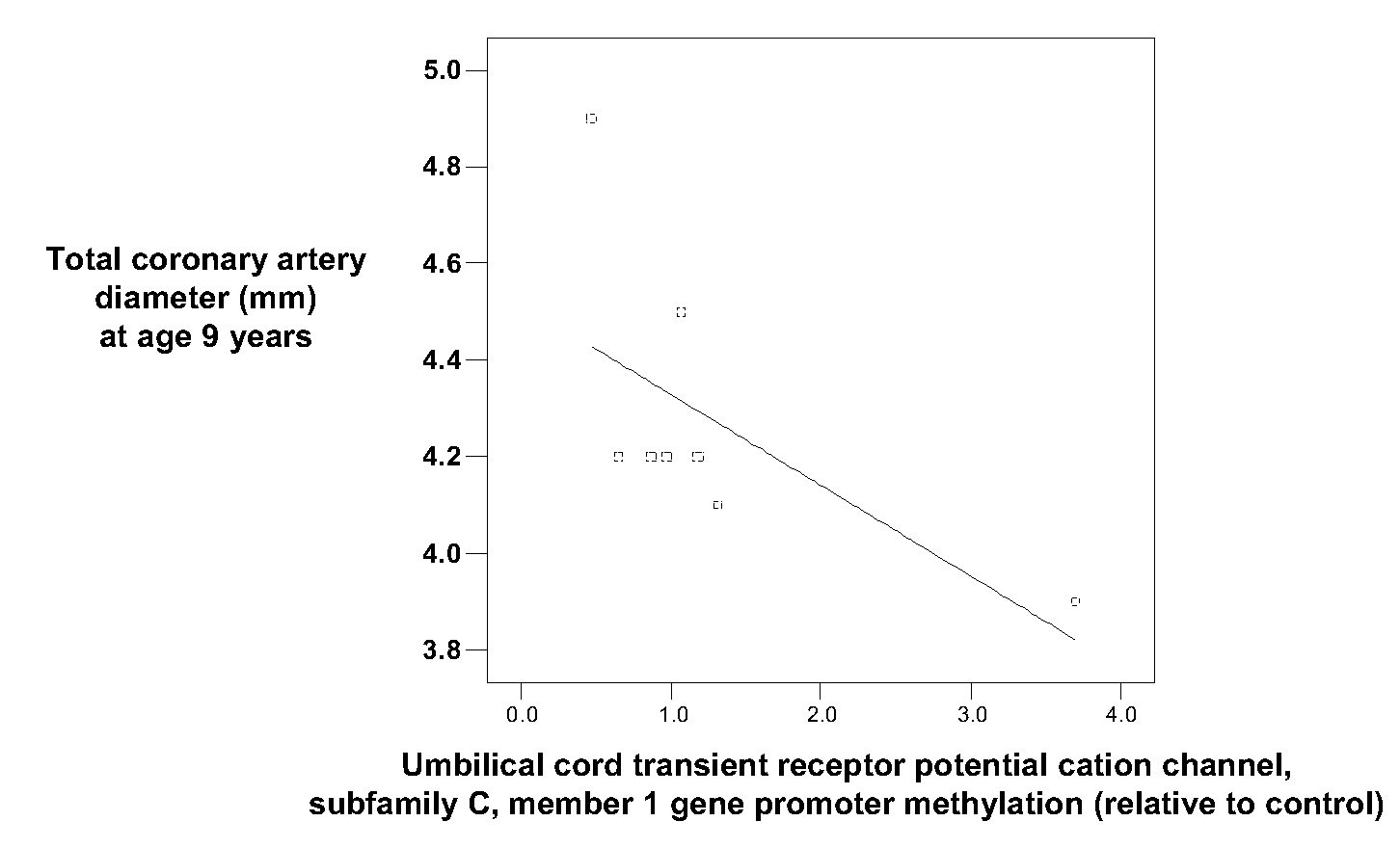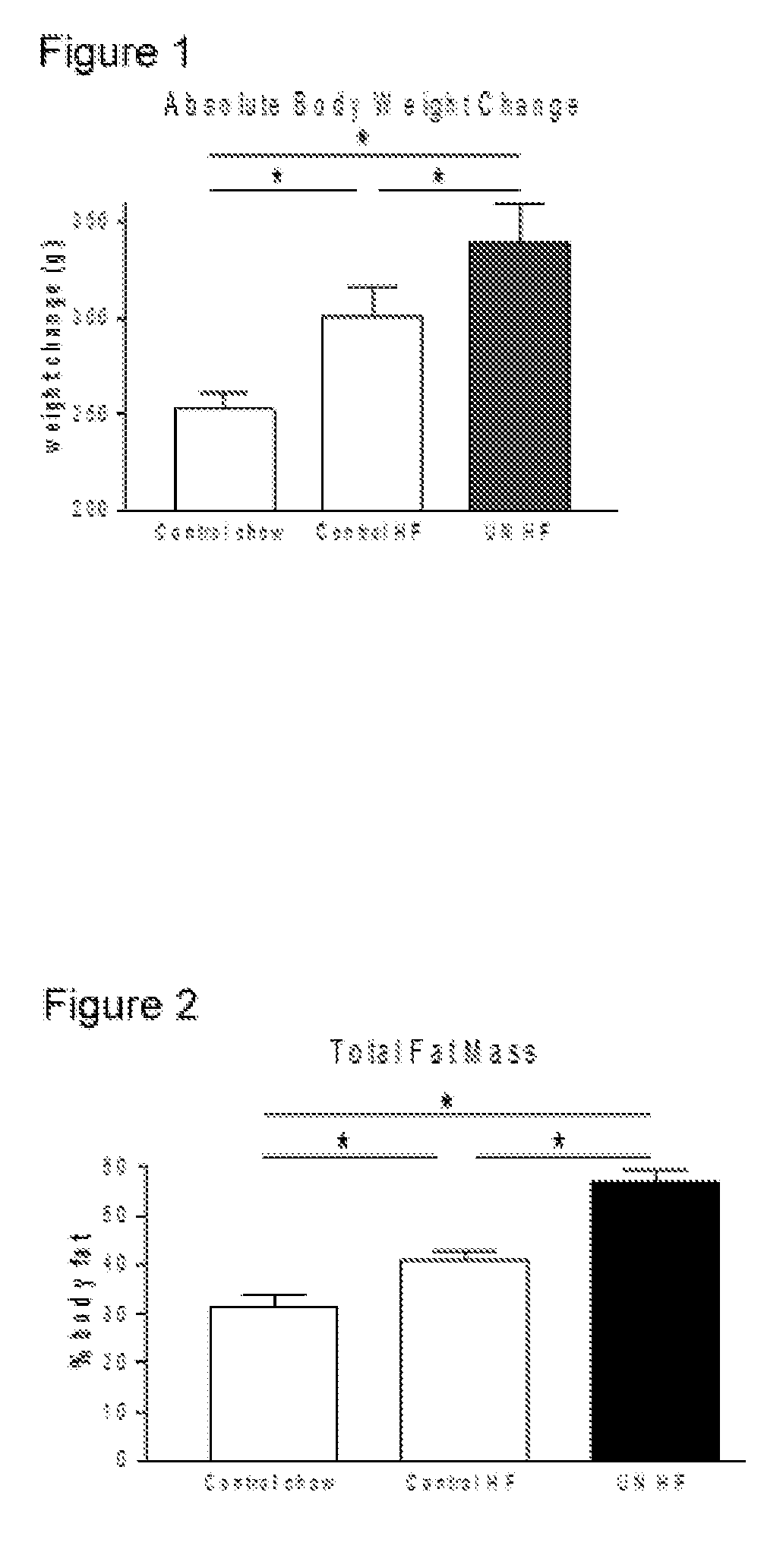Phenotype prediction
- Summary
- Abstract
- Description
- Claims
- Application Information
AI Technical Summary
Benefits of technology
Problems solved by technology
Method used
Image
Examples
example 1
Study Design
[0052]A previously developed maternal undernutrition model of fetal programming was utilized in this study (Vickers et al, 2000, American Journal of Physiology 279:E83-E87). Virgin Wistar rats (age 100±5 days) were time mated using a rat estrous cycle monitor to assess the stage of estrous of the animals prior to introducing the male. After confirmation of mating, rats were housed individually in standard rat cages with free access to water. All rats were kept in the same room with a constant temperature maintained at 25° C. and a 12-h light: 12-h darkness cycle. Animals were assigned to one of two nutritional groups: a) undernutrition (30% of ad-libitum) of a standard diet throughout gestation (UN group), b) standard diet ad-libitum throughout gestation (AD group). Food intake and maternal weights were recorded daily until the end of pregnancy. After birth, pups were weighed and litter size was adjusted to 8 pups per litter to assure adequate and standardized nutrition ...
example 2
Samples
[0063]Umbilical cord samples were taken from pregnancies in the University of Southampton / UK Medical Research Council Princess Anne Hospital Nutrition Study.
Methods—Subjects and Phenotyping
[0064]In 1991-2 Caucasian women aged >16 years with singleton pregnancies of <17 weeks' gestation were recruited at the Princess Anne Maternity Hospital in Southampton, UK; diabetics and those who had undergone hormonal treatment to conceive were excluded. In early (15 weeks of gestation) and late (32 weeks of gestation) pregnancy, we administered a dietary and lifestyle questionnaire to the women. Anthropometric data on the child were collected at birth and a 1-inch section of umbilical cord was collected and stored at −40° C. Gestational age was estimated from menstrual history and scan data. 559 children were followed-up at age nine months, when data on anthropometry and infant feeding were recorded. Collection and analysis of human umbilical cord samples was carried out with written inf...
PUM
| Property | Measurement | Unit |
|---|---|---|
| Fraction | aaaaa | aaaaa |
| Current | aaaaa | aaaaa |
| Current | aaaaa | aaaaa |
Abstract
Description
Claims
Application Information
 Login to View More
Login to View More - R&D
- Intellectual Property
- Life Sciences
- Materials
- Tech Scout
- Unparalleled Data Quality
- Higher Quality Content
- 60% Fewer Hallucinations
Browse by: Latest US Patents, China's latest patents, Technical Efficacy Thesaurus, Application Domain, Technology Topic, Popular Technical Reports.
© 2025 PatSnap. All rights reserved.Legal|Privacy policy|Modern Slavery Act Transparency Statement|Sitemap|About US| Contact US: help@patsnap.com



